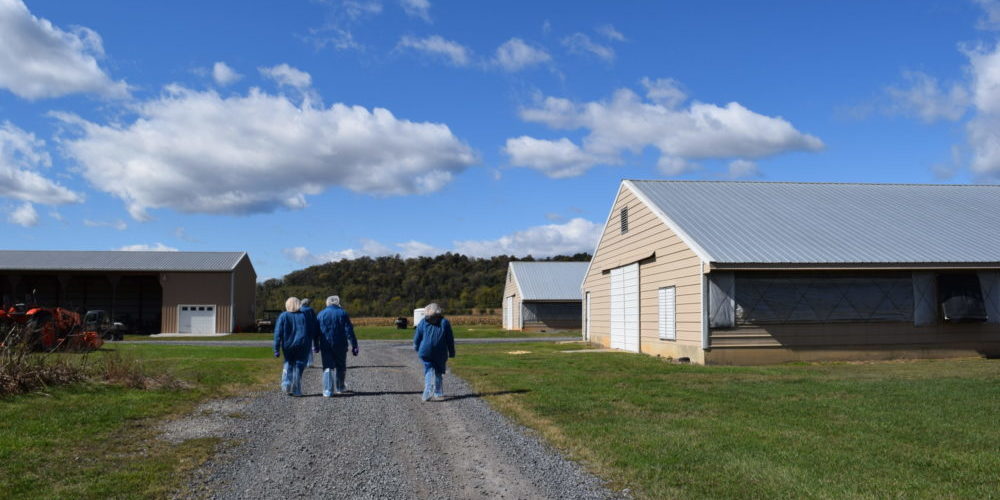Thirteen years ago, my family and I gathered in our living room on Sunday evening to watch Extreme Makeover: Home Edition. Thoughts of having to go to school the next day lingered in my head. I knew the show was coming to the end because everyone was cheering “Move That Bus” in anticipation for the family to see their new house. However, their chant was interrupted by a phone call. I sprinted to the phone. After saying hello in a somewhat spirited voice, my introduction was followed with a worrisome, shaky response. “They called the squad on your grandma. You all need to get to the hospital as soon as possible.”
This phone call was the beginning of my grandmother’s 12-year battle with dialysis. She was rushed to the hospital because her kidneys had failed and needed immediate treatment. Unfortunately, she was too old to get a transplant, but thanks to modern medicine, dialysis provided an avenue for continued treatment that sustained and increased her quality of life.
So what does this have to do with ‘big ag?’ Well, nurses and doctors are able to develop and deliver such treatments in part because American farmers and ranchers are able to produce enough food so other people can pursue careers of their choosing, like medicine. In the 1800s, each farmer grew enough food in a year to feed three to five people. By 1995, each farmer was feeding 128 people per year.
‘Big ag’ works to feed not only the farmers and ranchers but everyone else that is not in the agriculture industry, yet it sometimes gets a bad reputation. Why? What do you think of when you hear the term? Do you think of large farms that mistreat animals? What about thousands of acres covered in soybeans, corn, or other crops? Do you think of an industry so large that it comes across as threatening? When I did an initial Google search of the term, here are a few article titles that appeared:
- Corporate Farming, Wikipedia
- How Farmers Can Use Data to Push Back Against Big Ag
- Gagged by Big Ag
- Big Ag is Rotten
This search helps illustrate the negative connotation associated with the term. But let’s dig a little deeper to help debunk these initial thoughts and opinions to show you that ‘big ag’ doesn’t mean ‘bad ag.’
Size of the industry
According to the United States Department of Agriculture, agriculture and its related industries contributed $789 billion to the U.S. gross domestic production in 2013. That is a lot of money; so yes, agriculture is a big industry. But food is a basic necessity for life, so it would make sense that farming and the processes that follow harvest would make up a significant part of our economy. And it is no secret that our population is increasing. More mouths mean more food so if we need to expand our agricultural production to feed more people, does that mean we are ‘bad’ by using more of our natural resources such as land? On the contrary, the agricultural industry is using less land to produce more food.
“In spite of a growing population and increased demand for agricultural products, the land area under cultivation in this country has not increased. While advanced farming techniques, including irrigation and genetic manipulation of crops, has permitted an expansion of crop production in some areas of the country, there has been a decrease in other areas. In fact, some 3,000 acres of productive farmland are lost to development each day in this country. There was an 8% decline in the number of acres in farms over the last twenty years. In 1990, there were almost 987 million acres in farms in the U.S., that number was reduced to just under 943 million acres by 2000, and then reduced to 914 million acres in 2012.”
Environmental Protection Agency
Size of farms
In the 1800s, 90 percent of the population lived on farms; today, it is approximately one percent. Because fewer individuals are involved in production agriculture and the population is increasing, it only makes sense that farmers would have to increase their operations. So why would bigger be bad? Some are concerned that bigger farms sacrifice animal welfare. However, this is not the case. Regardless of farm size, farmers and ranchers are still responsible for the care of their animals. The industry has also set in place practices that assist in these areas.
Farming is also a business, which means it needs to yield profits. I think a lot of times we forget this because while farmers and ranchers consider it a way of life, it also needs to support themselves and their families. A report from the USDA found that in recent years, 85-95 percent of farm household income has come from off-farm sources (including employment earnings, other business activities, and unearned income.) Would you be willing to get up a 4 a.m. every day of the year (including holidays!) to milk cows or spend 20 hours a day in the field if it only accounted for 15 percent of your household income? Increasing farm size helps contribute to profitability because it makes investments more worthwhile. Does purchasing a new car make you think twice? A new combine can reach up to half a million dollars! Do you even want to think about putting up a new barn?
I’m thankful for ‘big ag’
As I reflect on the term ‘big ag’, I am thankful that farming operations have increased in size and production. It allows individuals to specialize in other areas (such as medicine, engineering and the arts) which all contribute to our quality of life. It has given rise to new technology that aid in our environmental impact. And it has given an opportunity for a profitable future for American farmers and ranchers.
All posts are the opinion of the author and do not necessarily represent the view of the Animal Ag Alliance.







